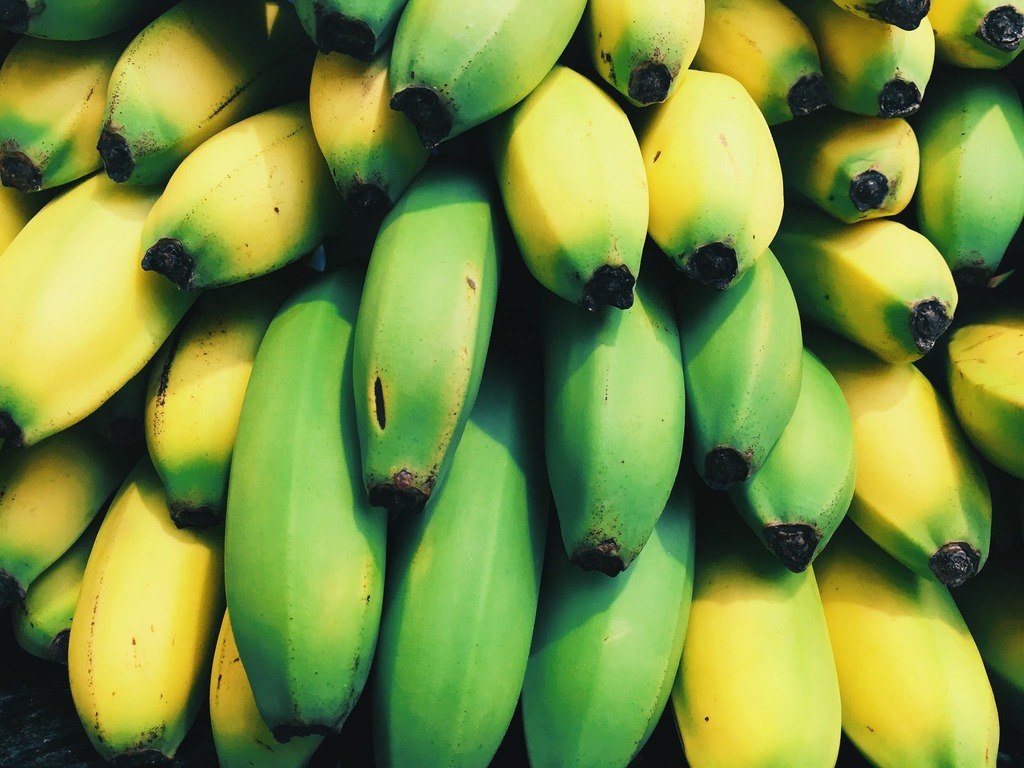Bananas are the number one favorite fruit among Americans, with an average person consuming 27 pounds per year. They are sweet and rich in antioxidants, potassium, vitamin C, B6, and dietary fiber.
An interesting fact about this fruit is that we don’t have to wait until they are fully ripe to enjoy them. Even though eating ripe and green bananas have their own advantages, people with unstable blood sugar should probably opt for one of them.
Before revealing what the better option is, here are some general facts about ripe and unripe bananas.
Ripe vs. Unripe Bananas
Facts about Ripe Bananas & Blood Sugar
Yellow or ripe bananas are rich in carbs in the form of starch, sugar, and fiber. In fact, a medium ripe banana has 6g of starch and 14g of sugar, and 93 percent of its calories come from carbohydrates.
This is important for those with unstable blood sugar as they have to pay close attention to the amount and type of carbs they consume. That’s because carbohydrates increase blood glucose levels more than other nutrients.
And, having constant high blood glucose can harm our health in many ways. It can cause a lot of health complications like kidney damage, heart disease, nerve damage, vision loss, etc.
So, this is the reason why we should limit the intake of carbs and control our blood glucose levels.
What’s more, yellow bananas have a higher glycemic index than green ones, which is another reason why we should avoid them.
On the bright side, ripe bananas have more antioxidants than green ones. Also, they produce TNF cytokine with anti-cancer properties.
Facts about Unripe Bananas & Blood Sugar
The type of carbohydrates in bananas depends on how ripe they are. So, unripe or green bananas contain more resistant starch and less sugar.
Resistant starch “resists” digestion, which means it acts similar to fiber and keeps us full for longer. This means they won’t cause blood sugar spike similar to fiber. But, once cooked, it becomes highly digestible so it’s no longer resistant.
Furthermore, resistant starch helps feed the good gut bacteria, which is related to improved metabolic health and blood glucose control.
One study discovered that supplementing with resistant starches improved blood glucose control in women with type II diabetes in a period of 8 weeks.
Other research discovered that resistant starch reduces inflammation and improves insulin sensitivity.
However, it’s still unknown how resistant starch acts in those with type 1 diabetes.
Other health benefits of green bananas include relieved diarrhea, shigellosis, and improved intestinal lining and nutrient absorption, especially calcium.
So, Which One Is Better for Blood Glucose?
People with high blood glucose should opt for green or unripe bananas instead of yellow ones.
Simple & Interesting Ways to Use Unripe Bananas
- Mix some green banana slices with oats and yogurt for a creative breakfast
- Make a popsicle or ice-cream alternative by dipping some unripe bananas in yogurt and then rolling them in crushed nuts
- For a tangy banana chutney, dice and toss some unripe bananas with salt, lemon juice, onion, and sugar



